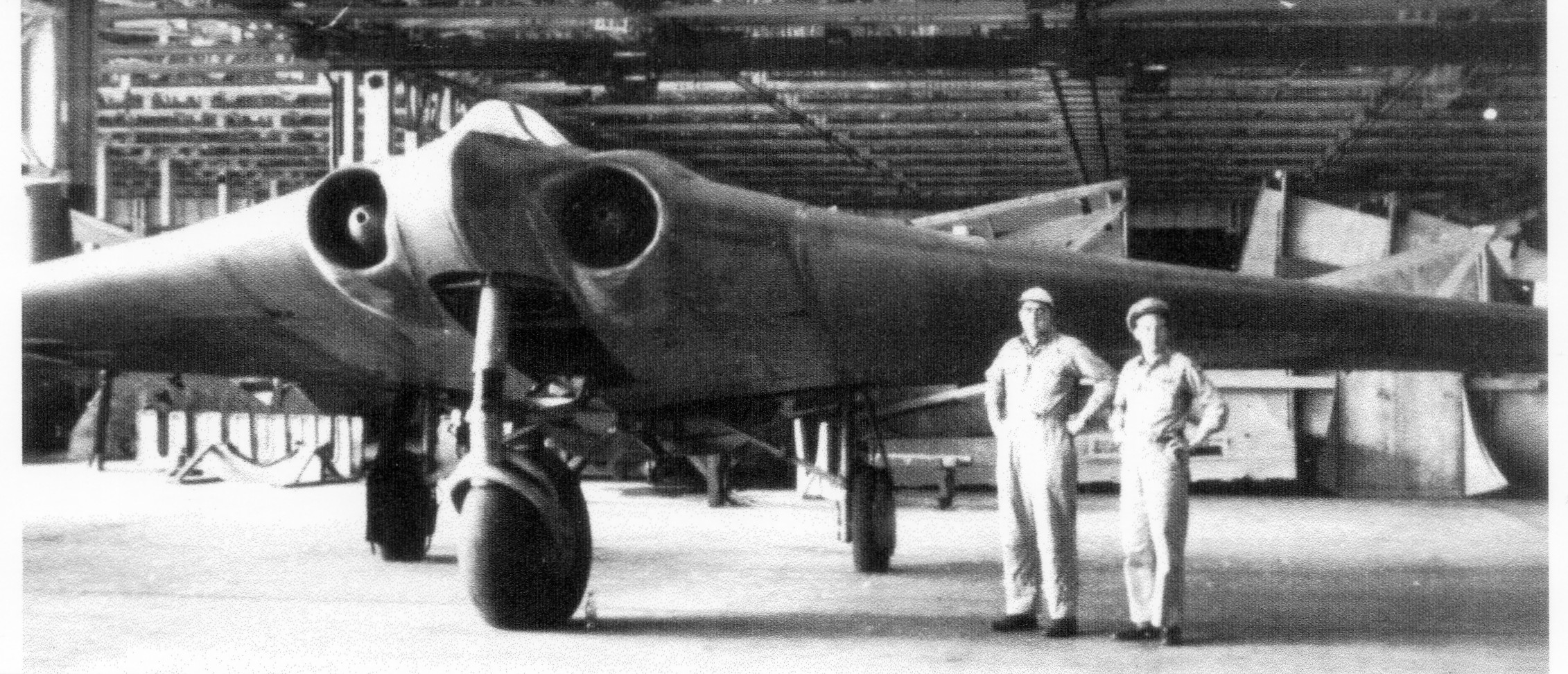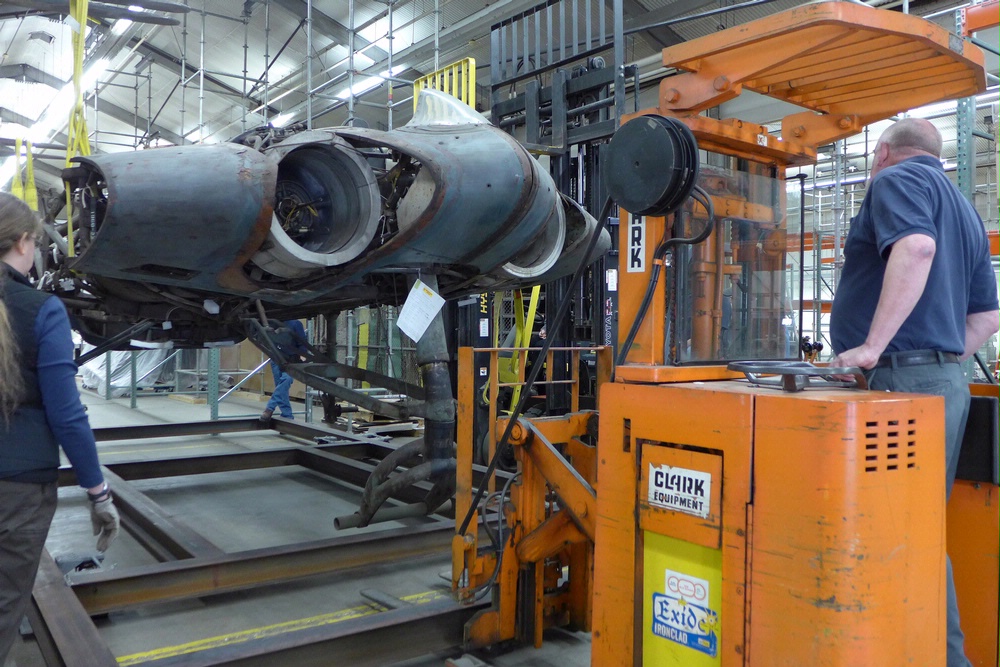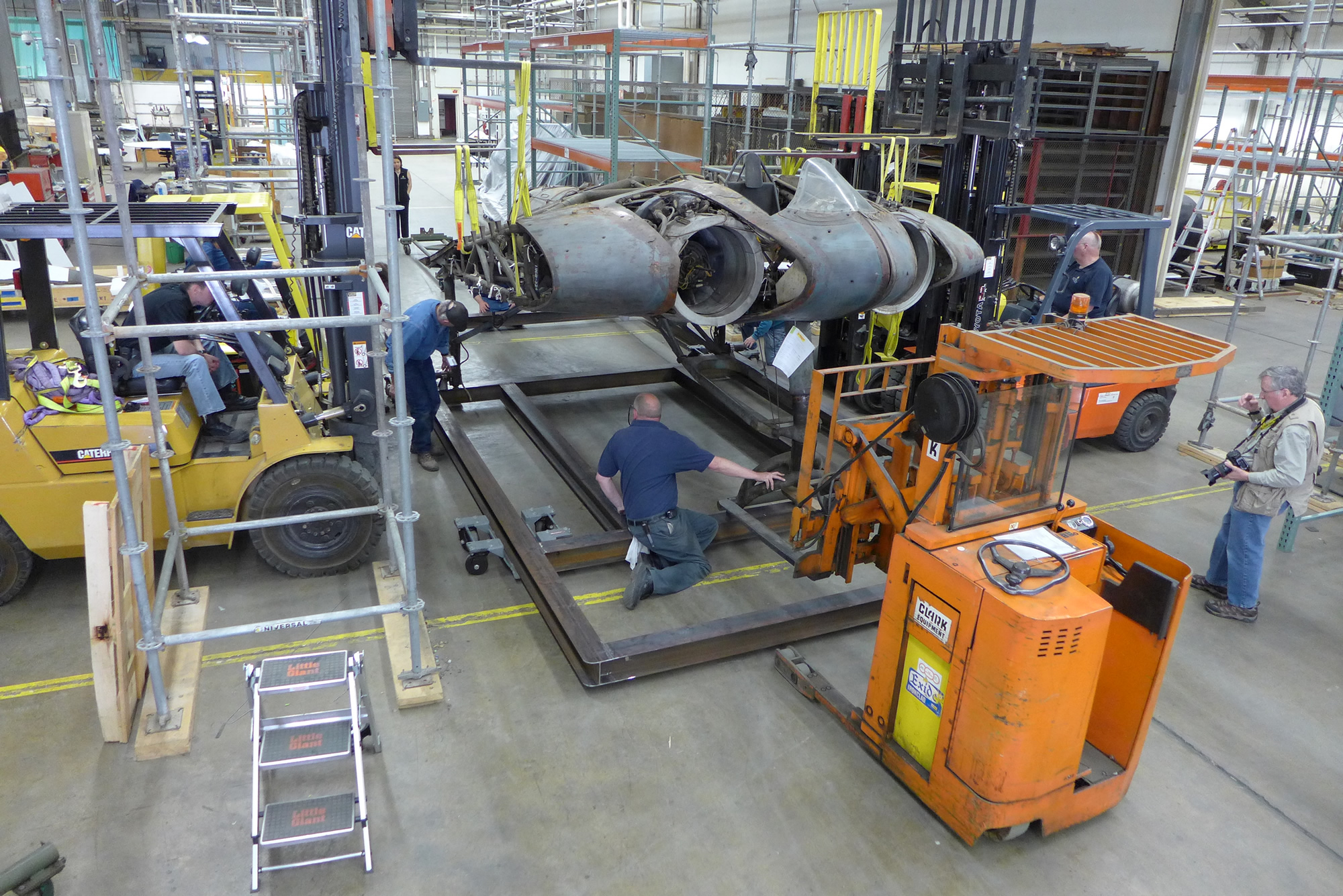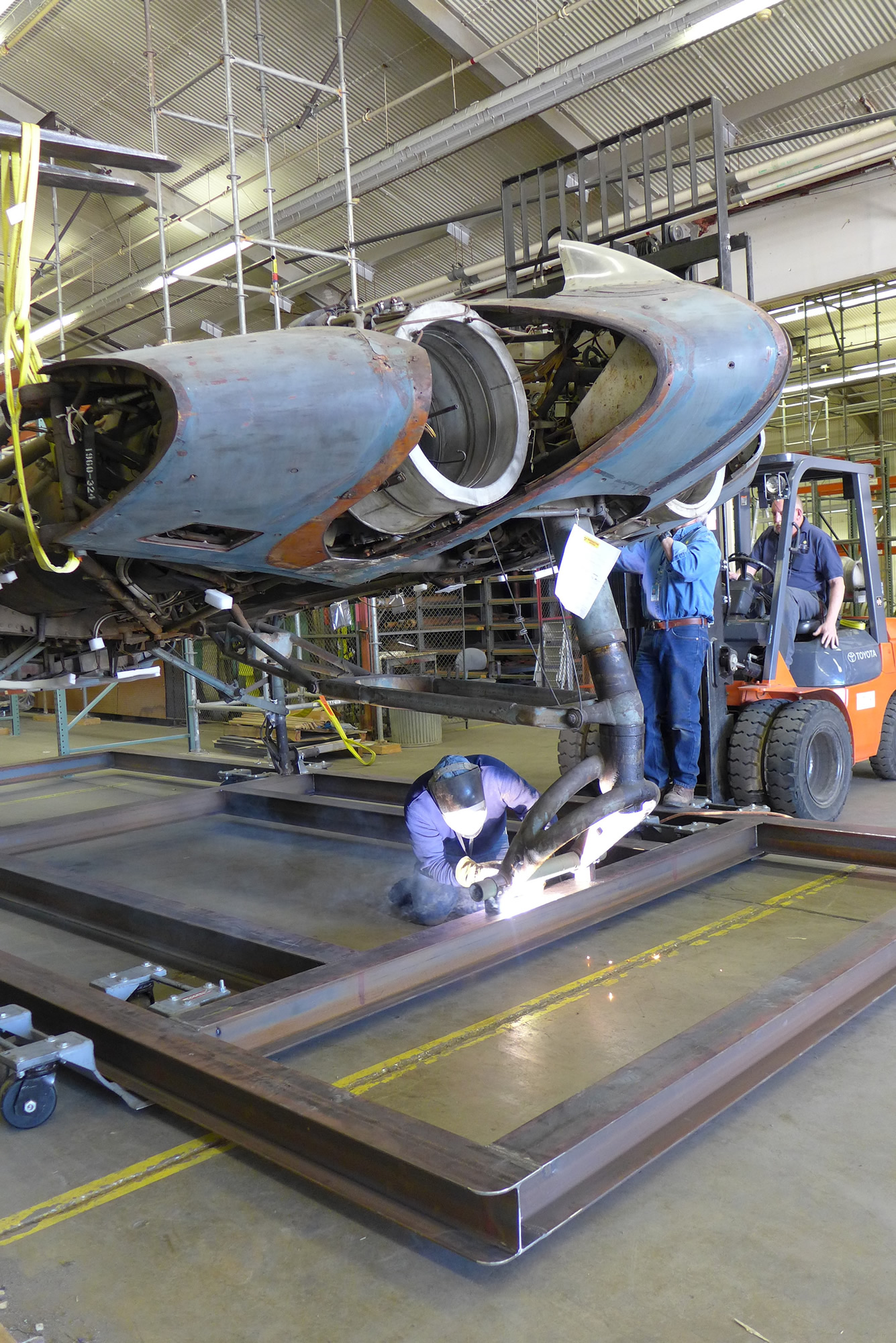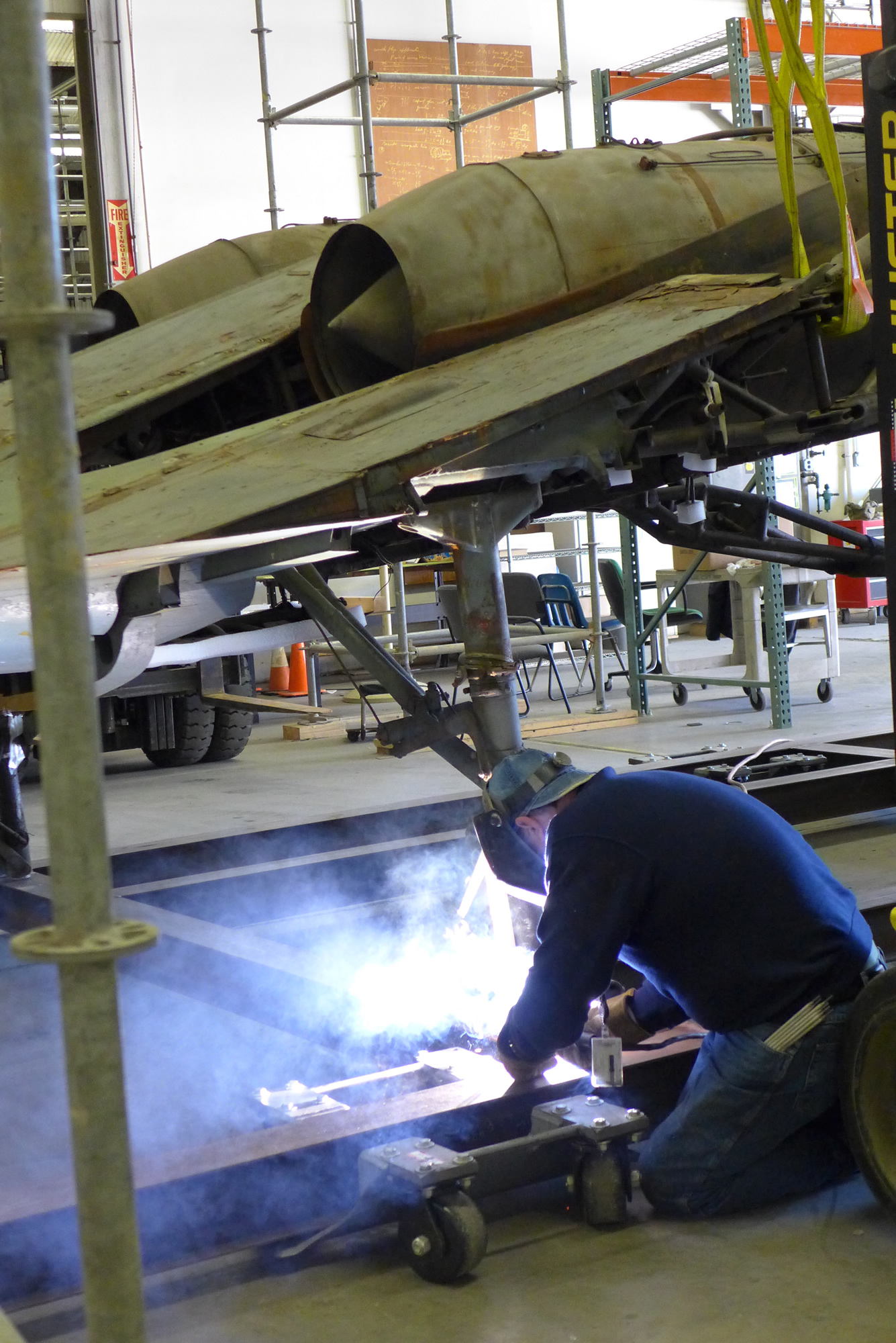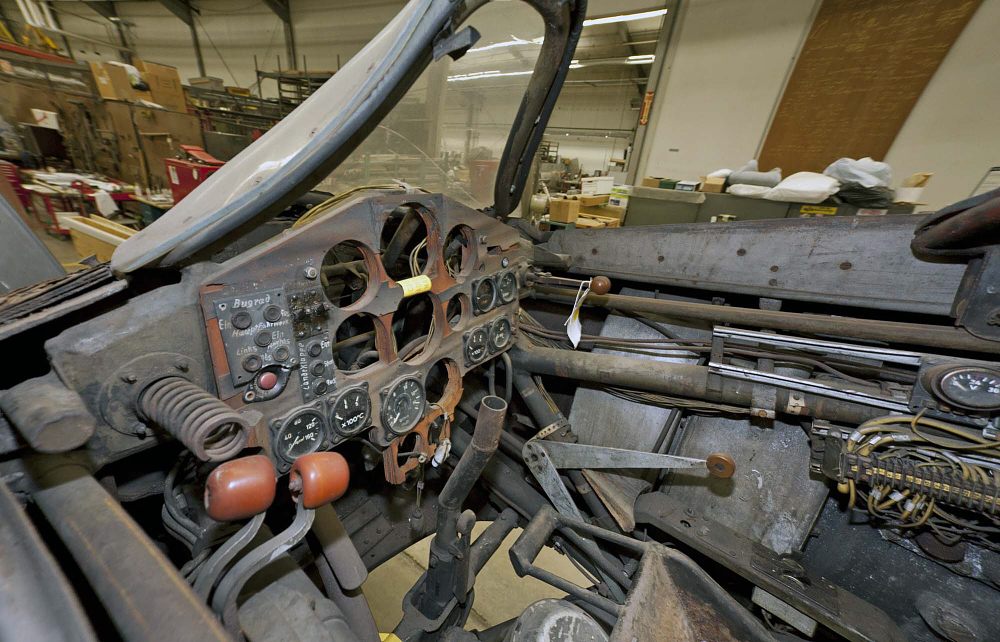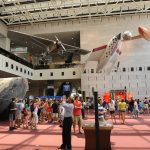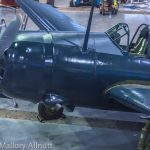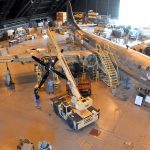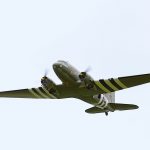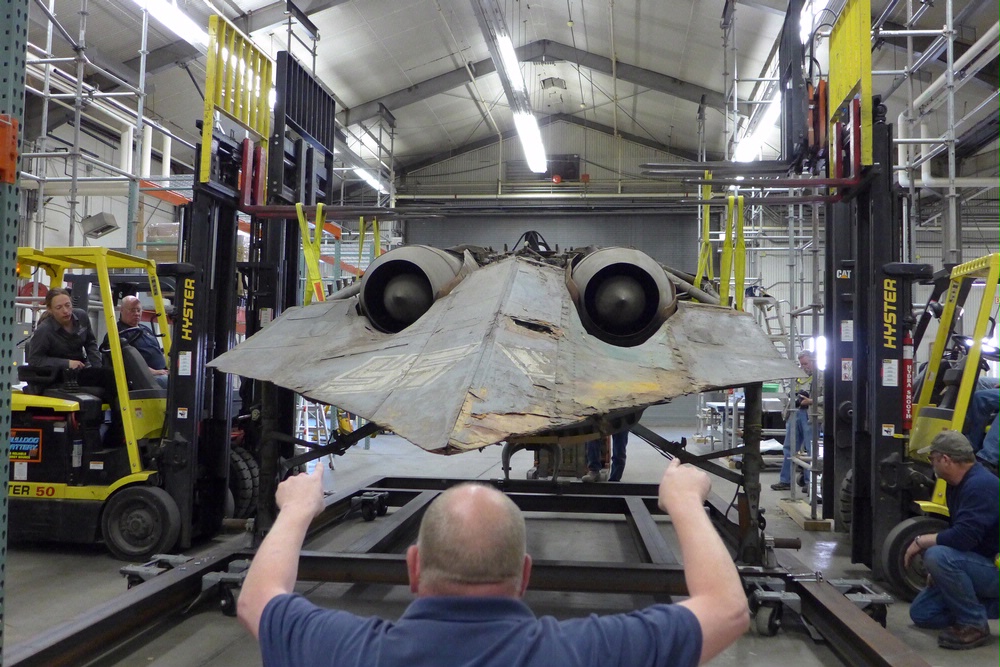
WarbirdsNews has some welcome news coming from the Smithsonian’s National Air & Space Museum. The center section for their unique Horten H IX V3 is being prepared for transport to their Steven F. Udvar-Hazy Center in Chantilly, Virginia. This radical-looking, flying wing is the prototype for what would have been the formidable Horten Ho-229 jet fighter with the Luftwaffe had WWII lasted much longer. Only one of the prototypes flew, and it crashed, but the Horten brother’s had proven the basic concept with smaller, but similarly-shaped gliders, so it really was only a matter of time and resources before the jet-powered variant could have been perfected for combat. NASM’s example is the last of her breed. American forces captured her in the closing days of the war, and shipped her back to the US for evaluation. The aircraft is based upon a steel frame, but the exterior cladding is mostly plywood, which is in quite poor condition with significant delamitation in places.
NASM has selected the aircraft for display inside the Mary Baker Engen Restoration Hangar at their Udvar-Hazy Center. The wings have been at the facility for some time, and now NASM has mounted the center section to a custom-built steel frame at its long-time home, the Paul E. Garber Preservation, Restoration and Storage Center in Silver Hill, Maryland. A sturdy cover will eventually be mounted to the steel cradle, totally enveloping the aircraft for protection on its roughly 40 mile journey to Chantilly. NASM is currently talking with local transportation officials to plan the route and timing for the move, which will likely happen later this summer. Hopefully, this amazing aircraft will join the restoration queue in the near future for preservation, and formal display in the main building. However, NASM’s rare Martin B-26 Marauder “Flak Bait” is next in line for restoration at present, with the nose section on its way from their downtown Washington, DC headquarters in the coming days.
Many thanks indeed to the National Air & Space Museum for permitting us to use their wonderful photographs.








